DepthReading
The four-footed legends of the silk road
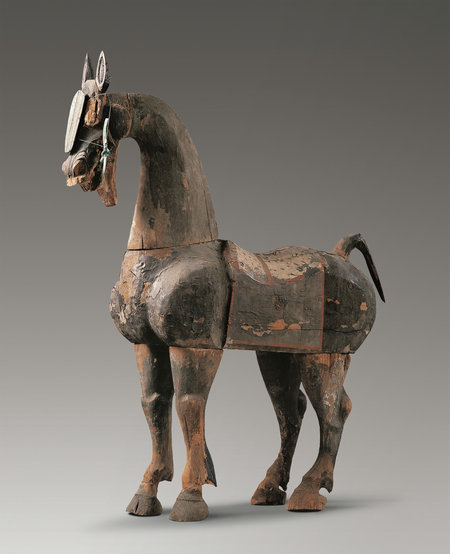
In ancient China animals did a lot of the economic heavy lifting and made a great contribution to art
In Western mythology the most famous horse is that of Troy, the giant wooden ruse that the Greeks used to wrong-foot their enemy.
If there is any equine image in the East that can match the stature of its Western counterpart, it is probably that of the "heavenly horses" - horses that once traveled the ancient Silk Road connecting the Chinese empire with the vast land lying to its west.
And if the Trojan horse embodied military subterfuge, then the heavenly horses, tianma, represented raw speed and stamina. The latter have also spawned numerous works of art, ones that remind us not only of a powerful ruler's ambition but also of the transcontinental trade route this ambition eventually gave birth to.
That ruler was Emperor Wudi of the Han Dynasty (206 BC-AD 220), under whose reign China gained prosperity and might that was without precedent. Mindful of the constant harassment of his country by the steppe nomads, Wudi sought to solve the issue once and for all, by forming an invincible cavalry that could strike with the same lightning speed as had those fierce horsemen. (These nomads, known as Xiongnu, had once laid siege to his great-grandfather and founder of the Han Empire.)
To do that he needed the warhorse, a breed native to the kingdom of Da Yuan, a Central Asian country in the Ferghana Valley. So around 139 BC the emperor sent out a convoy headed by a man named Zhang Qian on a westward journey that eventually took them to Central Asia. Their two most important tasks: to seek a military alliance with other countries at enmity with Xiongnu and to look for the reputed horses.
During an eventful journey that lasted 13 years, Zhang Qian was captured by Xiongnu twice. When he arrived back in the Han capital in 126 BC he was accompanied by just one man - and there were no horses.
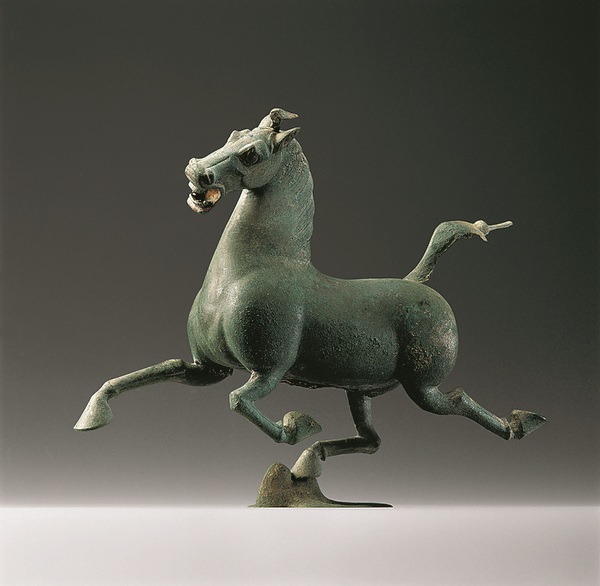
However, according to Houhanshu (the Book of Later Han, penned by a Chinese historian during the fifth century and considered an authoritative record of the Han history between 25 and 220), about 10, or at least five or six, diplomatic groups were dispatched annually by the Han court to Central Asia during this period to buy horses.
"For the Han people the horses had become a fetish and a cult, as evidenced by their newly assigned name, heavenly horses," says Rong Xinjiang, a professor of history at Peking University and an expert on the Silk Road.
"Compared with the indigenous Chinese breeds, these heavenly horses feature longer and spikier ears that made them look more vigilant. They also had elongated bodies that appeared both athletic and elegant."
One image that best illustrates this kinetic elegance is a bronze horse unearthed in Gansu province, Northwest China, across which the ancient Silk Road wound. With mouth open, ears pricked and nostrils flared, the steed charges ahead at full tilt. Its wind-whipped mane conveys momentum, but what really captures its speed and renders this sculpture an iconic work of art is a sparrow that appears under one hind hoof of the horse. It is as if the galloping horse, in a fleeting moment as it overtakes the low-flying sparrow, is stamping on the bird's wings.
The horse, coated in green patina, turned up in the tomb of a Han general, with a whole legion comprised of lance-holding horsemen and horse-drawn chariots. In most cases the mane on the horses' forehead is portrayed as being tied high up and blown back by strong wind. Another distinct feature is the tail, raised to form one curve or two. It is as if a powerful life force has charged through the horse, head to hind, and reached its endpoint undiminished.
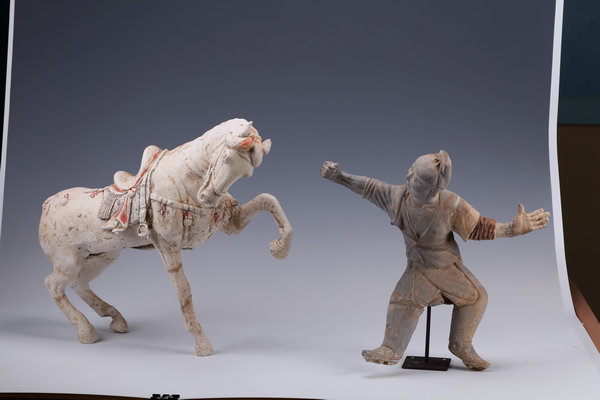
According to historical records, the Han government later set up breeding grounds in Gansu, hoping to localized the superior genes of the heavenly horses.
Perhaps the best proof of the horses' enduring popularity can be found in tombs of the Tang Dynasty, another golden period in Chinese history that was separated from the Han era by four centuries. There they abounded as polychrome glazed ceramic sculptures, mirroring the fact that in 725, during the reign of the Tang Emperor Xuanzong, the number of bred heavenly horses was put at about 430,000.
Another type of animal that often found itself standing side by side with the horses in the burial chamber of their masters was the camel, on whose back almost the entire history of the ancient Silk Road was sustained.
The stout animal, a veritable novelty when it first set its split hoof in Han China, was no doubt oblivious to the curiosity and confusion it aroused with the locals. Seeing a camel for the first time, many believed they were "horses with swollen backs", to quote a piece of contemporaneous writing.
However, it was not long before the animal was impressing all and sundry with its ability to endure hardship. The two species - the single-humped camels of West Asia and the double-humped ones of Central Asia - became the most preferred pack animals for all traders trekking back and forth along the ancient Silk Road.
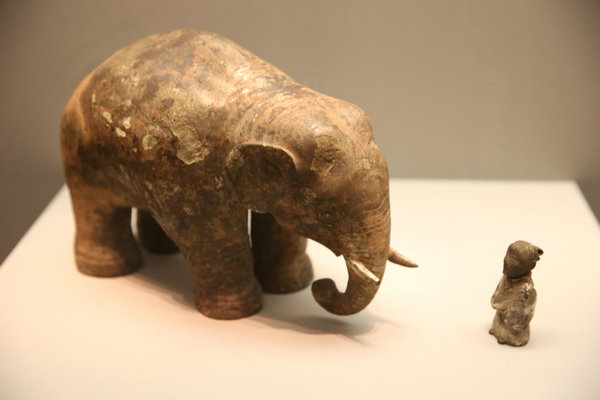
One particularly vivid rendering can be found in a glazed ceramic camel unearthed in a suburb of Xi'an, capital in both the Han and Tang dynasties. Craning its neck upward, the animal seems to be grunting loudly. Whether it is because of the heavy load and a crushing sense of tiredness or the glimpse of an oasis or something else will forever remain a mystery.
Ge Chengyong, a Silk Road research expert who acted as a consultant for a previous exhibition in Hong Kong, where the camel was on view, says that "a lot could be deciphered by simply looking into what is between a camel's double humps", pointing to another ceramic rendition of the animal from a slightly earlier time.
Straddling its back are a pair of sacks decorated with a drunk propped against another man and a woman.
"The drunk with a thick beard and potbelly is Dionysus, the Grecian wine god who could bring people harvest - think grape harvest in particular - and good fortune," Ge says. "Those on his left and right are two of his disciples, Satyrs and Stola. The images are telltale signs of a grape wine culture that originated in the Mediterranean and kept the Chinese intoxicated - literally and metaphorically - throughout the seventh and eighth centuries."
It was even blamed for preventing Tang from staying sober, when the powerful and prosperous empire, convulsed by sudden rebellion that erupted in 755, plunged headlong into a downward spiral from which it never quite recovered.
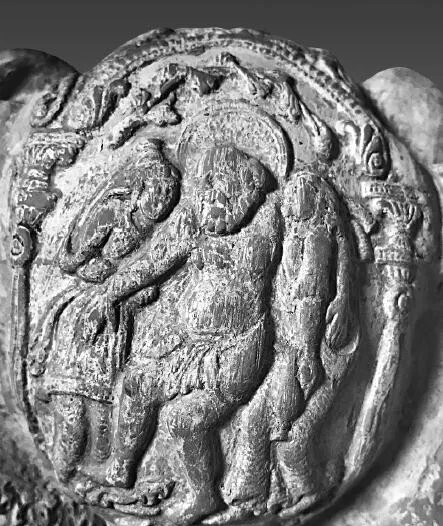
Other things that often weighed heavily on a camel's back included water flasks and, more importantly, bundles of silk that, once sold in Constantinople, could fetch hundreds of times their cost price in China.
But that is not all, says Li Yongping of the Gansu Provincial Museum, who compares the trading caravans with an itinerant circus. The ancient Silk Road cut through Gansu during its westward extension.
"That circus was stuffed by a big variety of animals - monkeys and eagles, peacocks and ostriches, lions and leopards, and possibly elephants and rhinos," Li says.
After a journey that must have been extremely demanding, if not costly in lives, most of these rare animals ended up in the private gardens or enclosures of the aristocrats, to be looked at by a privileged few. Artistic renderings also appeared, often in the burial chambers of these men who had gone to great lengths to make sure that their afterlife would be lived in the fashion to which they had become accustomed.
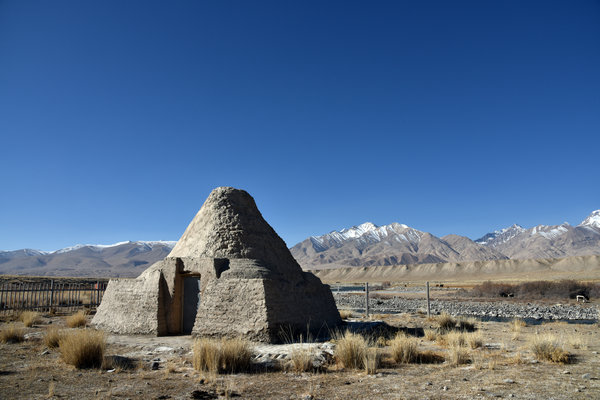
One example involves a pair of splendidly realized gilt bronze leopards, their spotted bodies curled up and eyes set with ruby stones. The Han people liked to place themselves in a kneeling position, and the leopards, designed as mat weights, would keep the mat from moving as the sitter shuffled. They belonged to Liu Sheng (165-113 BC), a Han Dynasty vassal king who was the half brother of Emperor Wudi, the man who was behind the opening of the Silk Road.
The leopard can also be found on a gilt silver plate unearthed in Gansu and dated to somewhere between the fourth and sixth century. On the animal's back sits Bacchus, the Roman equivalent of Dionysus, a fact that has led researchers to attribute the beautifully wrought plate to craftsmen from the Byzantine Empire.
"By connecting the dots, you get a line of not only the trade route but also the two-way flow of culture," Li says.
Another animal that left its paw prints on the cultural history of ancient China was the lion. The ferocious beast, native to today's India and Iran, is believed to have first entered Han China through the Silk Road, and was soon adopted as a decorative motif. The inside center of a Tang Dynasty silver bowl unearthed in Xi'an was occupied by a pair of confronting lions, highlighted by gilding.
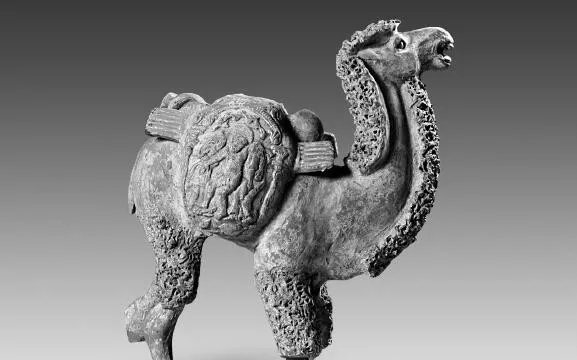
A 16-piece set of jade belt ornaments was found in the same place. A lion appeared on all but one piece, each of which features the animal in a uniquely different posture. Although jade traditionally came from Hetian (also known as Khotan) in what is now Xinjiang Uygur autonomous region, by the Tang era it had long entered canonical Chinese culture.
Tang emperors routinely gave jade or jade-embedded gold belts to their high-level officials. The royal favor was bestowed not on mere whim but according to strict protocol that dictated, among other things, the specific pattern that would appear on the belt plaques.
"The combination of a 'foreign' motif with a typical Chinese carving material, as well as its incorporation into the court culture, all signaled an assimilation process that lay at the heart of the Silk Road exchanges," Li says.
Unearthed in Xinjiang and dating back to Tang is a clay rendition of the lion dance, widely performed during the lunar Chinese new year then and now. The two pairs of legs protruding from the underbelly of the lion indicate that there were two performers.
Compared with Han, the Tang Dynasty had remarkably more true-to-life portrayals of lions by artists and artisans, who, presumably, had more opportunity to observe the animal firsthand. Concrete details bristle where free imagination used to reign.
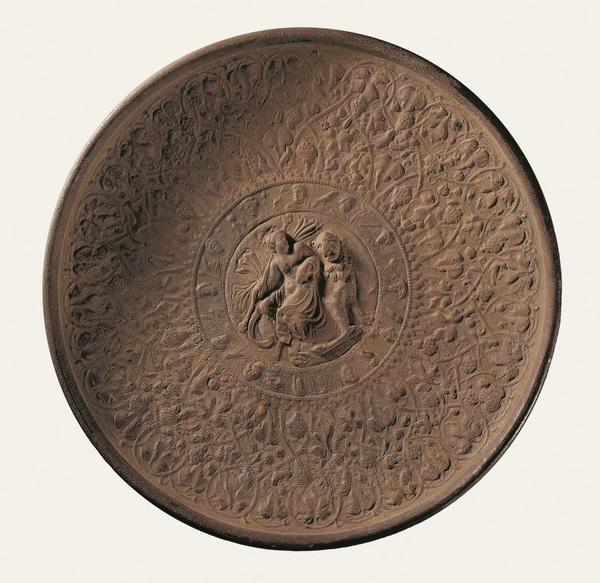
But that does not mean there was little room for imagination; in fact the reverse is true. A Tang Dynasty cup unearthed in Henan province had a peacock's resplendent tail wrapped around it to form a horn shape, the peacock itself being an exotic bird. The conical shape points unequivocally to a specific type of wine container known as rhyton, which first appeared in the Aegean region during the Bronze Age, before being produced over wide areas of ancient Eurasia. This particular one, realized in Tang Dynasty tri-colored porcelain (yellow, green and white), is most likely to be the work of a Chinese craftsman.
Another imported animal worth noting is the elephant, not merely because of its bulk, but also because of its close association with Buddhism, which continued to exert its influence through the ancient Silk Road. Bricks painted with white elephant have been discovered in the city of Dunhuang, Gansu, whose fabled grottoes are home to gorgeous religious paintings and rare Buddhist scriptures.
More earthly versions could be found in a gilt bronze elephant and a rhinoceros, unearthed in the burial ground of a Han Dynasty vassal king in East China. Both animals were accompanied by their grooms, who must have traveled the same distance before arriving in China two millennia ago.
In life as well as in death, these real-life animals had competed with mythical ones to win the favor of artists, and thus the chance of eternal life. The latter group included Makara, a sea creature in Hindu mythology that has the body of a fish and the head of a dragon. Another was kalavinka, a Buddhist creation with a bird's torso, a human head and the most exquisite voice. Very often their images grace a gilt silver plate or even gold hairpin for an aristocratic lady.
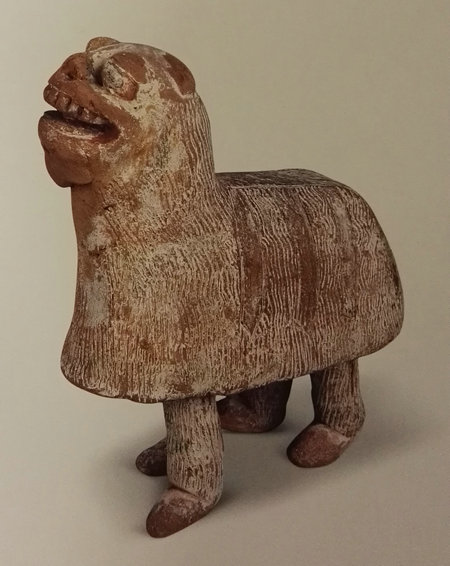
Culture and commerce, spiritual and mundane, the Silk Road animals are emblems for all.
On display at the previous Hong Kong exhibition were a polychrome painted horse and its tamer, both unearthed in the central Chinese city of Luoyang, a bustling commercial center and destination for endless streams of caravans during the Tang era.
Despite being lavishly harnessed, the horse shows no sign of obedience. This has resulted in all the tension and drama between the steed and the man, who, with legs wide apart, arms outstretched and veins on the wrists swelling up, tries desperately to rein in the muscular animal.
Ge says: "Undauntedness: man or animal, that's what they need to measure the length of the Silk Road, with their own steps. And those who did so can never be contained."
zhaoxu@chinadaily.com.cn
Category: English
DepthReading
Key words:
